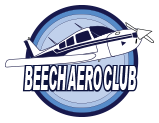GregJohnson
Orbiting Earth
My 1976 Sundowner C23 has a Sensenich propeller (76EM8S5) that was overhauled in 2002 in accordance with current FAA Regs and Sensenich Manual SPRM590. Also at the same time the engine, O-360-A4K, was overhauled by Lycoming. In 2005 a new Mitchell tach was installed due to failure of the old one, and a note in the log indicates "Complied with AD 69-09-03 R3, Continuous Operation RPM, by marking new tach as stated in AD text". Therefore my tach is marked redline from 2150-2350 RPM (as well as 2700 and up. I've read the AD from the FAA website and unless I'm missing something it says that the AD paragraphs (a) and (b), which relate to the required marking, do not apply to propellers installed on solid crankshaft Lycoming O-360 series .... , -A4K, ...
Other requirements of the AD says the propeller is to be inspected and reworked. I would think that the overhaul would cover that part.
So I'm wondering if the A&P should not have redline marked my tach in the 2150-2350 range.
Comments?
Greg Johnson
N2241L
Other requirements of the AD says the propeller is to be inspected and reworked. I would think that the overhaul would cover that part.
So I'm wondering if the A&P should not have redline marked my tach in the 2150-2350 range.
Comments?
Greg Johnson
N2241L
